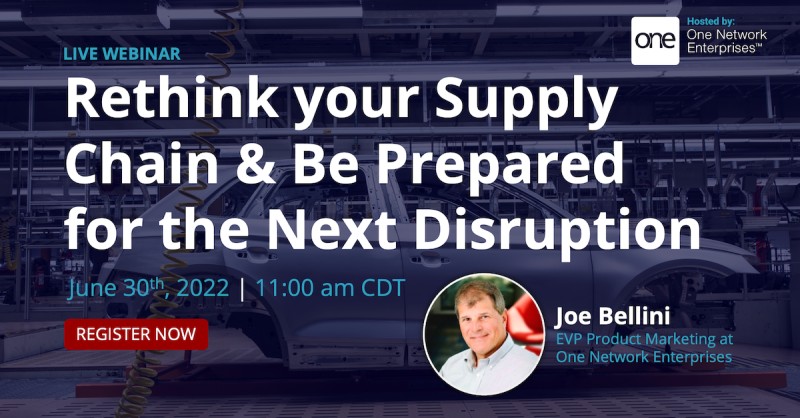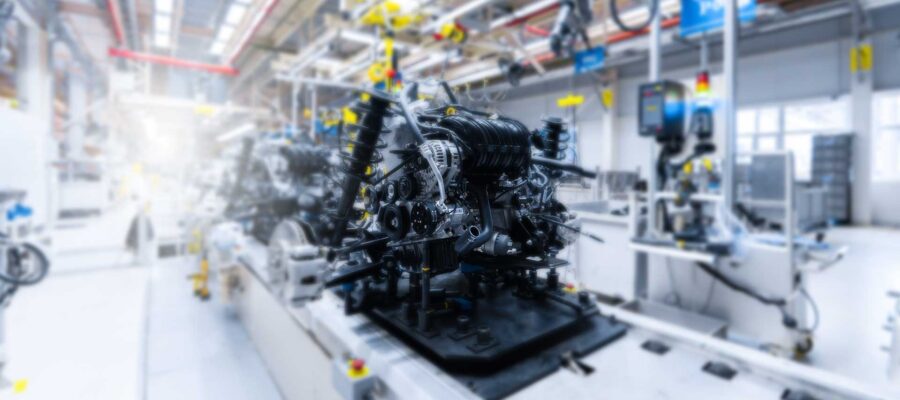This post has already been read 22278 times!
A report from the front on the major challenges facing the automotive sector today and how the leaders plan to meet them
Over the past few months, automotive original equipment manufacturers (OEM) and suppliers have been participating in banker-led sector updates. In these updates, strategies, opportunities, problems, and major initiatives have been discussed along with Q&A designed to understand go-forward plans and market positioning for each company.
This article is a summary of select points voiced by Ford, GM, Rivian, Lear, Adient, American Axle, and Aptiv, whose presentations were attended by the author. I’ll focus primarily on topics relevant to supply chain networks.
1. Permanent Reduction in Inventory Levels
All parties learned from having to meet demand based on a network of lowered inventory positions and scarcity of supply. The estimated typical three months’ of supply had dropped to one month. Predictions are that the industry will need to carry their new learnings forward and run with two months’ supply, running a more streamlined and make-to-order network.
Recommended: Rethinking the Automotive Supply Chain to Combat Disruptions
Reference was made to Tesla where a mix of new techniques applied from the tech sector across certain processes combined with proven automotive production techniques would lead to the best outcomes. For the upstream supply, the general consensus was that inventory policies would be designed around supporting make-to-order, along with keeping Just-in-Time (JIT) into final assembly. Upstream policies would include postponement and staging of inventories based on realistic lead times.
2. Electric Vehicle Momentum
A discussion was had around the valuation of Tesla as compared to the traditional internal combustion engine (ICE) vehicle OEMs. The issue for ICE over time is increasing costs related to meeting Corporate Average Fuel Economy (CAFE) standards, along with the overall environmental push which manifests itself in multiple ways. This means the cost of capital will be higher for ICE as compared to electric vehicles (EV). Ford discussed organizing into separate EV and ICE divisions with core market focus along with cross-organizational leverage.
3. Configuration
Due to the rising electronic content in vehicles, configurability is growing at an accelerated rate. Participants discussed high-tech supply chain network models, and the need to better understand those methods and processes, as they will apply to automotive in the future. The OEMs discussed the fact that the traditional forecasting techniques are no longer working, especially in the EV market.
4. Vehicle Life Cycle Leverage
Multiple programs, linked to the OEMs, are moving forward in this area, from subscriptions to used vehicle marketplaces. Key for everyone is a set of integrated processes that represent the entire vehicle life cycle from preference and acquisition through finance, insurance, support, service, maintenance, and rollover. Discussion around maintaining an ecosystem through the fourth owner, rather than the second owner, which is the average today. For example, one OEM discussed driving longer lifetime revenue through connected platforms with services and experience. Telematics, fleet management, EV charge management, and service management, all play a big role.
8 Key Strategies Leading Automotive OEMs and Suppliers Plan to Deploy: #4 Driving Longer Lifetime Revenue through connected platforms with services and experience… #automotive #supplychain Click To TweetThe goal is to maintain the post warranty service market. This will generate additional revenue, plus extend service revenue from the fleet post warranty. Companies will also get better penetration in mixed fleets by providing better service. They speculate that it could be possible to extend the revenue cut off from 4 years to possibly 10 or 15 years. And because uptime is critical for commercial vehicles, they could be serviced where they are, to minimize their out-of-service downtime.
5. Contractual Advancements
Everyone in the trading partner ecosystem is concerned about headwinds related to costs and inflation. Suppliers are dealing with a mixed bag, given cost increases on directed parts pass through to the OEM, but they are impacted by rising costs in many other areas. Significant focus is being placed on collaboration across all tiers of supply upstream in the network, and this includes futures positions on materials and capacity. Contracts themselves are being upgraded to include new terms around costs like ocean freight as well as non-cancellation of contracted materials and capacity.
Recommended: Rethinking the Automotive Supply Chain to Combat Disruptions
6. Supply Network Design and Operation
Lots of discussion around sourcing regionalization to reduce risk. Digital twins, scenario planning, multi-tier collaboration, supply coordination, and rolling constraints across the network, were all mentioned. Another key theme was the need to merge execution with planning to better perform, given the rolling constraints combined with demand and supply variation. There were questions about the ability of the supply base to ramp up based on increased production requirements.
Volatility in schedules remains a key concern with many changes happening weekly, sometimes even daily, where suppliers find out on Sunday that they aren’t shipping Monday, due to an assembly plant closure on Tuesday or Wednesday. Batteries are another key concern with some suppliers locking up raw materials such as lithium, cobalt, and nickel, and some investing in their own battery production. To complicate the networks further, the suppliers will have some components which are agnostic to ICE, Hybrid and EV, and others that are dedicated to a specific family.
7. Product Design
This was a key topic related to network sourcing, capacity, and availability. Responsibility for the design of certain subsystems was discussed, along with the consolidation of multiple and varied signal processors into a single bus. Platform design in general will become more highly leveraged. Engineering change notices will become more frequent in the EV segment as advancements are made around things like cockpit design, which could open the footprint for battery capacity as batteries continue to improve at the same time.
8. Constructive Collaboration Across the Network
If I had to pick a major theme that carried through every presentation, it would be this one. Financially, there are headwinds, tailwinds, and all kinds of problems and issues to be managed; but there is a big pot of gold for those who navigate them well. It was generally agreed that go-forward solutions will be a mix of things including demand shaping, inventory, and long-term contractual commits. In addition, participants acknowledged that better communication, forecasting processes, and supplier performance, were all critical to success.
The solution needs to be systemic, since even buying ahead in anticipation of problems, like we saw in Japan, only went so far. It was noted that just-in-time (JIT) didn’t cause the whole problem; and that carrying more inventory costs money, which the customer won’t pay for. However, if the OEMs can reduce disruption, and communicate in real time upstream across all tiers of supply, then suppliers won’t have to carry the extra inventory.
"Automotive OEMs can reduce inventory and guard against disruption by communicating in real time upstream, across all tiers of supply." -Joe Bellini Click To TweetEveryone needs to contribute in a multi-party, multi-tier network, working in real time to handle disruption as well as capitalize on mix and volume opportunities. Disruption is expected to continue, and will vary day to day, and quarter to quarter, similar to that sparked by events such as the pandemic, the war in Ukraine, and erratic supply flow from China. To navigate this variability and uncertainty, all trading partners in the ecosystem need to be open and transparent.
Change and Opportunity Abounds in Automotive
It is an exciting time in the automotive sector. New revenue opportunities exist in the traditional ICE markets and are rapidly expanding in the EV marketplace, all while supply chain network disruption has never been higher.
Adding to the complexity are new demand and forecasting models, more frequent engineering changes, increased flexibility and adaptability in the supply chain network itself, and the expansion of collaboration upstream through all tiers of suppliers considering raw materials and related gating capacity for those components. And for both the OEM’s and their suppliers, they now have a platform mix between ICE and EV, where there is some co-mingling which further complicates their network processes.
Everyone is being asked to maximize on all this opportunity as volume rebounds, while simultaneously lowering costs through maintaining inventory reductions, labor efficiencies, and other cost/expense related improvements.
I’ve been researching the automotive market and these ongoing developments in the automotive supply chain for a while now. While there are definitely major changes and challenges ahead, there are also some lucrative opportunities. I’ll be sharing these insights on an exclusive webinar coming up, register here.

You might also like…
- What is on the Horizon for Supply Chain Management?
- What Constitutes a True Network?
- Real-World Supply Chain Robotics
- Supply Chain Trends to Watch
- Fielding Software to Defense: A Journey of Ineffectiveness, Inefficiency, and Frustration
- 8 Actionable Supply Chain Trends for 2023 - January 19, 2023
- Constraint-Based Supply Planning & Execution - November 21, 2022
- Supply Chain Planning Control Tower - September 29, 2022

One comment
Comments are closed.